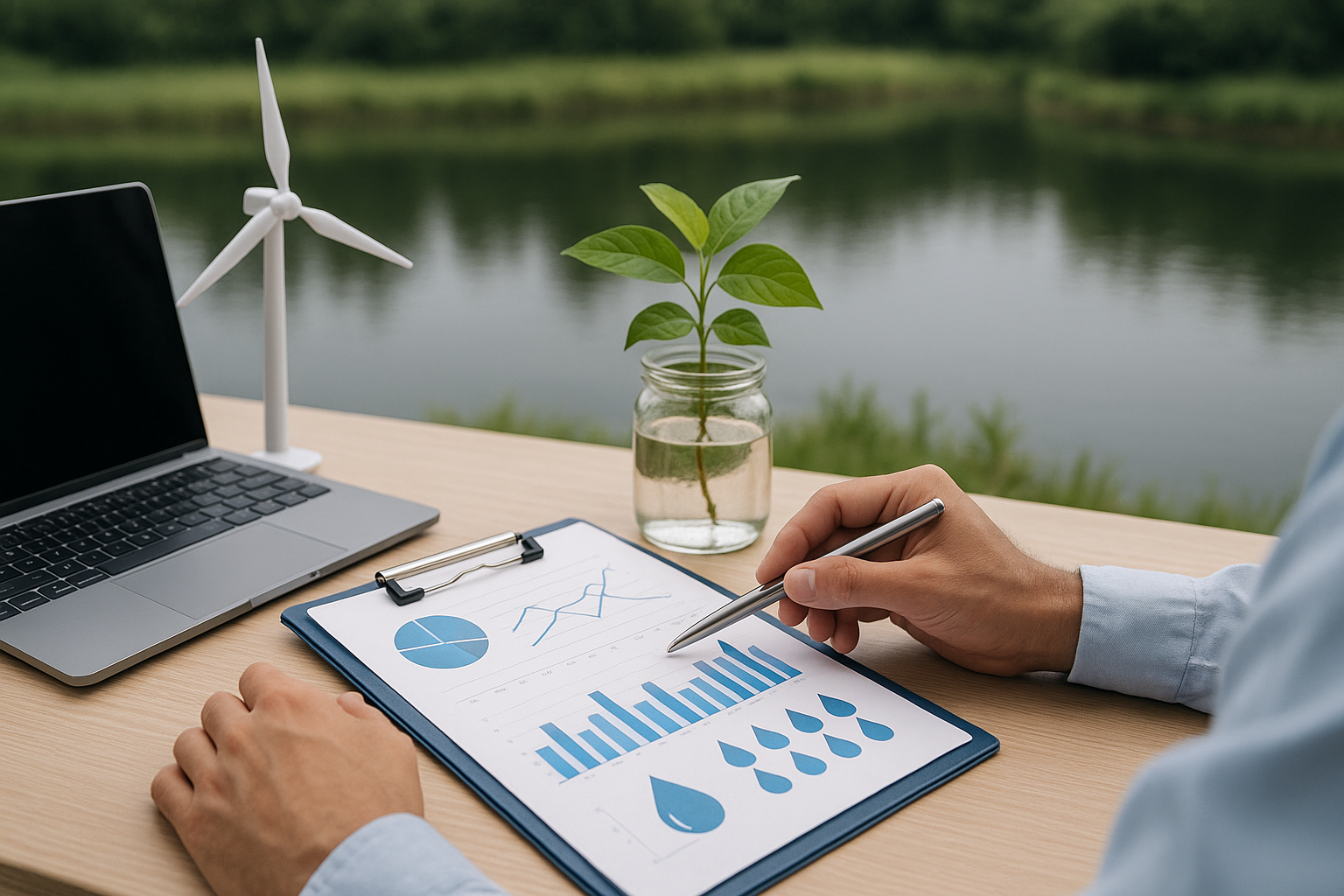Building Resilient, Responsible, and Future-Ready Water Systems
Water is a vital but increasingly threatened resource. Rising demand, pollution, and climate-driven variability are driving businesses to adopt sustainable water management practices. Our water consulting services enable organizations to reduce risks, secure long-term supply, and demonstrate stewardship. Integrating water governance into supply chains and ESG reporting enhances resilience and stakeholder trust.
Our Core Services
Comprehensive water solutions to help your business navigate water sustainability with confidence and strategic clarity.
01
Water Footprinting & Accounting
Quantify direct and indirect water use with ISO 14046 standards. Identify hotspots to manage consumption, reduce costs, and improve resource efficiency.
02
Water Risk & Resilience Assessment
Evaluate risks such as droughts, flooding, and regulatory changes using geospatial and scenario tools. Develop asset and supply chain resilience strategies.
03
Water Stewardship & Governance
Align with Alliance for Water Stewardship (AWS) standards. Promote transparent governance, stakeholder engagement, and responsible sourcing practices.
04
H2O Renew
Design reuse and recycling strategies to minimize discharge and environmental impacts. Enable circular water systems that lower costs and enhance sustainability.
05
Catchment & Basin-Level Strategy
Assess watershed health and competing pressures. Collaborate with stakeholders to ensure sustainable access and shared value.
06
Governance & Compliance
Embed water metrics into disclosures aligned with GRI, CDP, CSRD, SASB. Strengthen compliance and investor credibility.
Why Water Sustainability Matters

Water Crunch Ahead
By 2030, demand may outstrip supply by 40%, leaving unprepared businesses exposed.
Operational Risk
Scarcity, floods, and droughts can halt production, disrupt supply chains, and strain communities.
Rising Scrutiny
Regulators and investors now demand transparent disclosure of water use, risks, and management.
Trust at Stake
Customers, employees, and local communities lose faith in companies mismanaging shared water resources.
Frequently asked questions
We use international standards such as ISO 14046 and the Water Footprint Network methodology, mapping direct operations as well as supply chain water use. The level of detail depends on data availability and reporting needs.
Both physical risks (scarcity, droughts, flooding, quality degradation) and transition risks (regulation, tariffs, reputational pressures). Assessments often use basin-level data and climate scenarios for accuracy.
Timelines vary by data readiness and scope. A focused operational review may take a few weeks to months, while full supply chain or basin-level assessments may extend over several months. The process is paced to ensure accuracy and actionable outcomes.
Water is a key disclosure area under frameworks like GRI, SASB, CDP, and CSRD. Embedding stewardship practices strengthens compliance and builds credibility with investors, regulators, and stakeholders.
High water-use sectors such as agriculture, food & beverage, textiles, mining, and energy typically face the greatest exposure. However, all businesses benefit from risk assessments and stewardship practices given growing climate pressures.
Yes, with the right treatment technologies, wastewater can be recycled for industrial processes, cooling, irrigation, or even potable reuse in some contexts. Circular water management reduces costs and environmental footprint.

